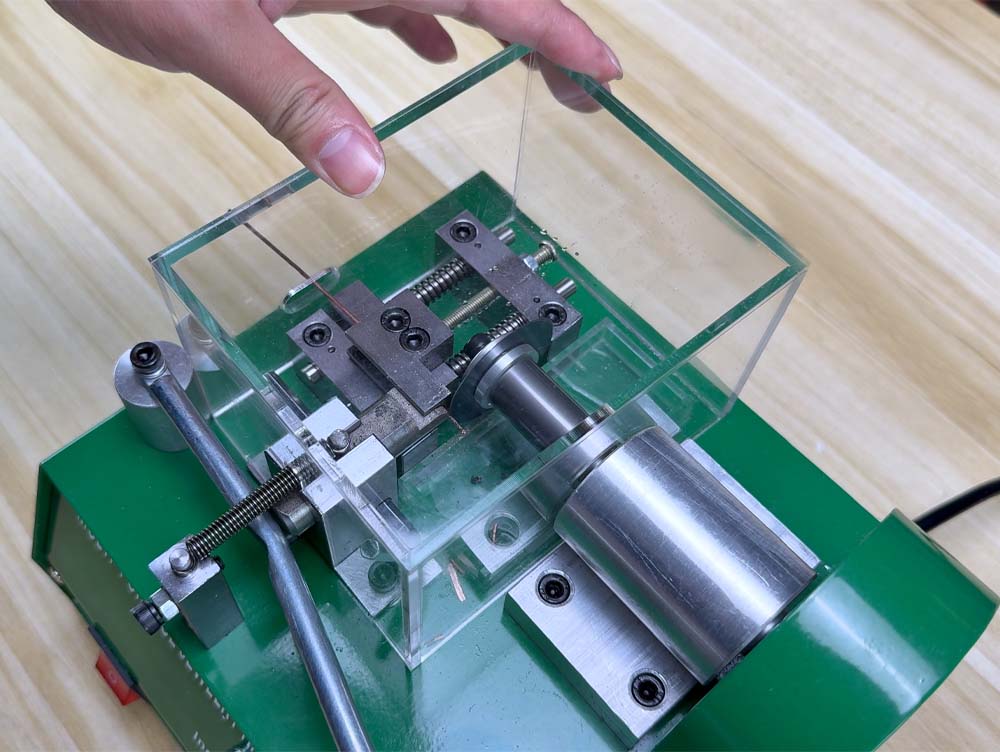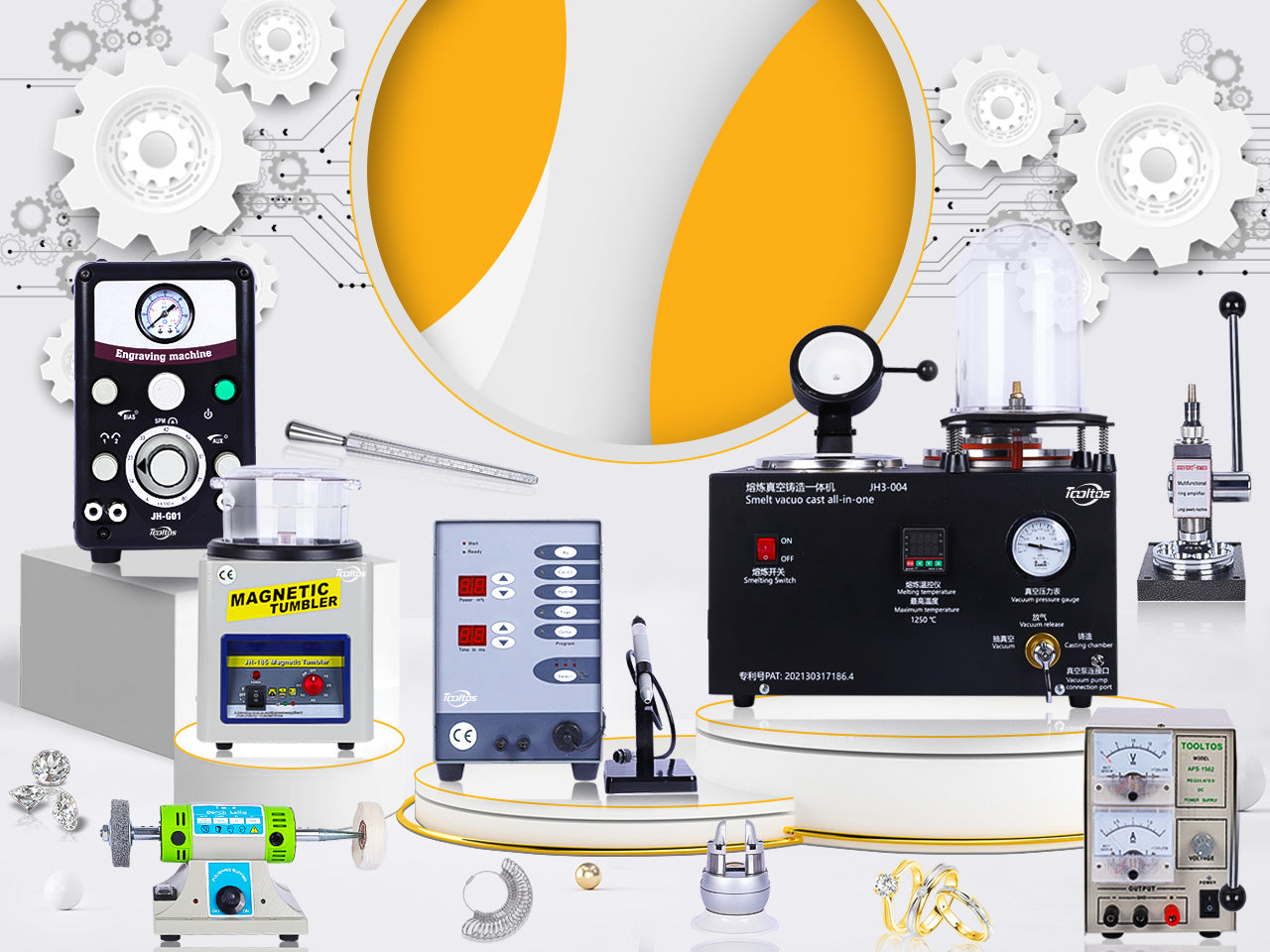Jewelry cutting machines encompass a range of powered tools—from traditional saw presses to modern laser cutters and CNC milling—that enable precise, repeatable cuts in metal, stone, and composite materials for jewelry fabrication. Across these technologies, the core principles involve converting electrical or mechanical power into controlled linear or rotary motion, guiding a cutting implement (blade, wheel, beam) along a programmed or manually guided path, and removing material under carefully managed speeds, feeds, and cooling/lubrication conditions to prevent damage or heat buildup. Key machine types include bench-mounted jewelers’ saw presses, rotary disc saws, ultrasonic cutters, laser engravers/cutters, and CNC mills. Each machine has its own ideal applications—whether piercing fine filigree, slicing through dense metal stock, cutting precise patterns in sheet, or trimming castings. Proper setup (blade or tool selection, speed/feed calibration, fixturing, and safety measures) is essential to maximize both production efficiency and the quality of finished parts.
1. Bench-Mounted Jewelers’ Saw Presses
Saw presses automate the up-and-down motion of a jeweler’s saw, offering steadier feeds and reducing operator fatigue. The motor drives the blade via a crank or cam linkage, maintaining consistent tension and stroke length.
-
Operation Principle: An electric motor turns a crankshaft or eccentric cam, converting rotary motion into a reciprocating action that moves the saw frame vertically .
-
Common Uses: Piercing metal sheet, cutting intricate shapes, and creating interior cutouts in rings or pendants .
-
Key Features: Adjustable stroke length, variable speed control (typically 600–1,600 strokes/min), and quick blade-change mechanisms .
2. Rotary Disc Saws
Rotary disc saws use a circular blade (e.g., carbide, diamond-coated) that spins at high RPM to slice through metal, plastic, and even stone.
-
Operation Principle: The motor directly spins a thin abrasive or toothed disc; material is fed into the rotating blade to cut .
-
Applications: Trimming castings, cutting sheet stock, and shaping inlay stones .
-
Advantages: Clean edges, minimal burrs, and ability to use varied disc materials (carbide for metals, diamond for hard stones) .
3. Ultrasonic Cutters
Ultrasonic cutting employs a rapidly vibrating blade to slice soft or brittle materials.
-
Principle: A transducer converts high-frequency electrical energy (often 20–40 kHz) into mechanical vibrations; the blade oscillates, reducing cutting force .
-
Uses: Cutting rubber molds, fragile polymer sheets, and non-metal composites without cracking .
-
Benefits: Minimal heat, clean edges on delicate materials, and reduced mechanical stress .
4. Laser Cutting and Engraving Machines
Laser cutters focus a high-power beam (commonly CO₂ or fiber lasers) to vaporize or melt material along precise paths.
-
Principle: A laser resonator generates coherent light, directed through optics to a focal lens, creating a high-energy spot that melts/vaporizes material .
-
Jewelry Applications: Cutting thin metal sheet, engraving surface designs, and cutting acrylic or wood for display stands .
-
Key Parameters: Power (10–100 W for metal cutting vs. <30 W for engraving), pulse vs. continuous wave, and assist gas (air or nitrogen) .
5. CNC Milling and Routing Machines
CNC machines use rotating end mills to carve 3D shapes and pockets in metal blocks or wax patterns.
-
Principle: Computer-controlled axes move a spindle and cutting tool along X, Y, and Z axes per a programmed toolpath .
-
Uses: Prototype wax models, relief carving in metal, and precise trimming of cast parts .
-
Advantages: High repeatability, complex geometry, and integration with CAD/CAM workflows .
6. Waterjet Cutting (Specialty)
Though less common in jewelry, micro waterjet systems use high-pressure water mixed with abrasive to cut metals without heat.
-
Principle: Pressurized water (30,000–60,000 psi) passes through a mixing chamber with garnet abrasive, then through a fine nozzle to erode material .
-
Applications: Cutting thick sheets, stone inlay components, and heat-sensitive materials .
-
Benefits: No Heat-Affected Zone (HAZ), minimal tool wear, and very fine kerf widths (0.1–0.3 mm) .
7. Diamond Wire Saws (Macro Applications)
Diamond-impregnated wire loops can slice through ultra-hard materials (e.g., ceramics, obsidian) for specialty jewelry work.
-
Principle: A diamond-coated wire moves continuously around two pulleys, cutting via abrasion .
-
Use Cases: Cutting gemstone rough, slicing large beads, and specialized material separation .
-
Considerations: Low feed rates (~1–5 mm/min) and dedicated cooling systems .
Best Practices for Jewelry Cutting Machines
-
Tool and Speed Matching
-
Use the correct blade/bit/nozzle for material and thickness: diamond for stones, carbide for metals, soft rubber molds only with ultrasonic blades .
-
-
Secure Fixturing
-
Always clamp parts in vises or jigs to prevent movement and ensure operator safety .
-
-
Cooling and Lubrication
-
Employ cutting fluids, air blast, or water to reduce heat and extend tool life .
-
-
Maintenance
-
Regularly inspect blades, clean nozzles/chucks, and lubricate moving parts per manufacturer guidelines .
-



0 commenti